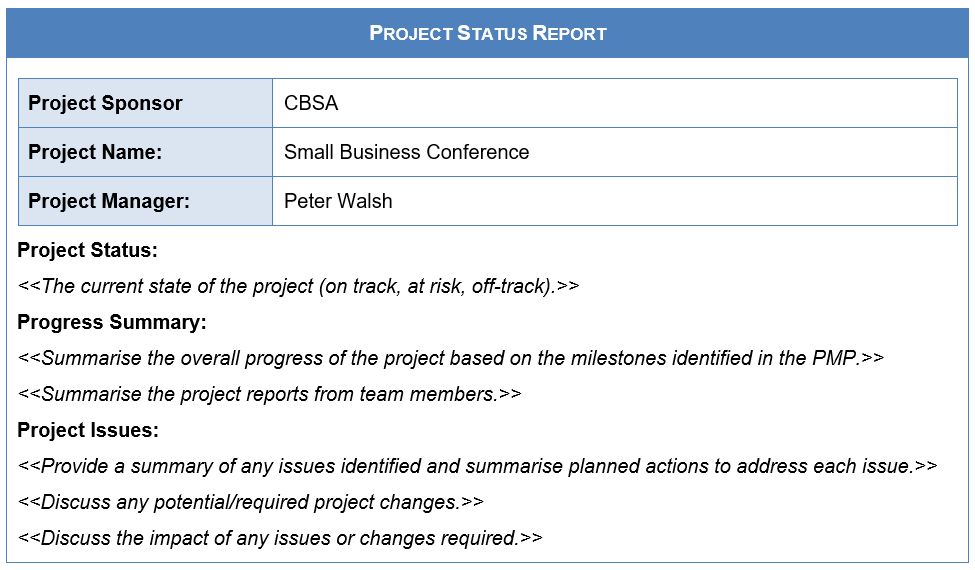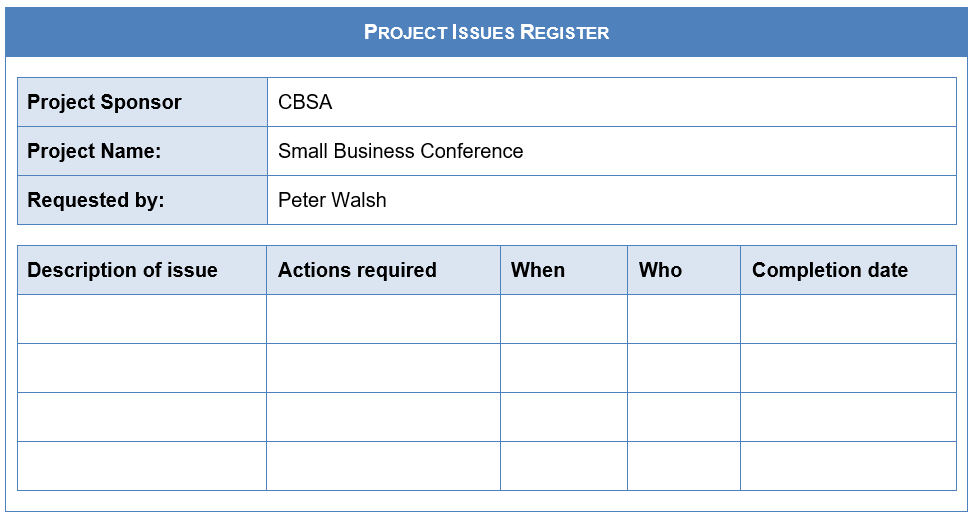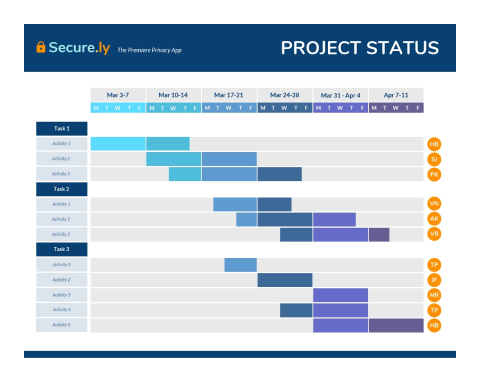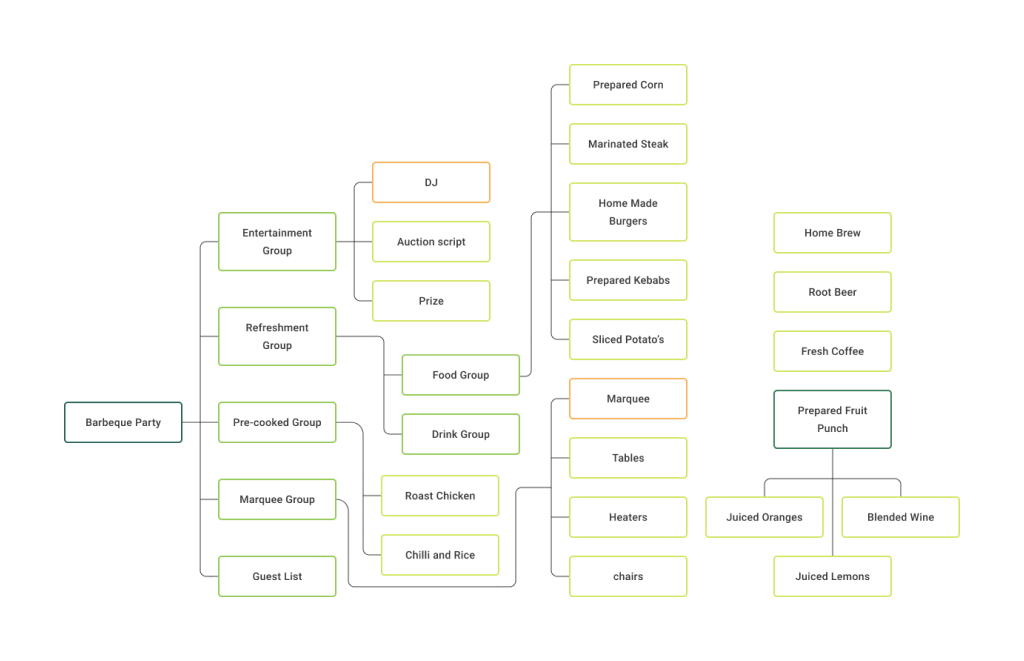In this unit, you will learn how to complete project management functions and integrate the responsibilities of overall project management.
In this topic, we will start by looking at the Project Life Cycle.
By the end of this topic, you will understand:
- Introduction to project governance
- Project initiation documentation
- Monitor and control project
- Project lifecycle
In this introductory section, we will explain Project Governance and its importance in project management, together with the Project Governance model.
The term ‘Governance’ in project management refers to aspects that determine how your organisation leads, runs and controls projects.
It is the framework within which a project progresses, including its financial aspects, logistics, personnel, procurement, etc.
Project governance covers the following aspects, listed below:
Watch the YouTube What is Project Governance?
Many companies must adhere to guidance from external legislation, like the Sarbanes-Oxley law, which was passed in 2002 to require that companies take certain steps to ensure accurate audits, accountability, and transparency.
Elizabeth, 2019
It is the framework within which a project progresses, including its financial aspects, logistics, personnel,
The importance of project governance
Project governance is an internal commitment as well as a responsibility towards clients.
Project governance also helps you with the following listed items:
| Effective operations | Prove that your company operates effectively and within the specified guidelines and regulations of your industry |
|---|---|
| ROI | Improve your return on investment and track those investments effectively |
| Gain buy-in | Gain buy-in |
| Avoid project failure | Avoid common causes for project failure by creating mre opportunities to recognise them early on in the process |
| Communicate more effectively | Provide the right information, at the right time, in an appropriate format |
| Standardisation | Introduce standardisation across projects, making it easier to compare the performance |
| Minimise risk | Identify, manage and control risks |
| Motivate staff | Develop and motivate staff is a structured environment |
Project governance model
Most organisations have some form of project governance in place. But what is project governance, and what are the different models and structures that exist?
Project governance is the framework within which decisions about a project are made. It includes the people, processes, and tools used to make decisions about a project. There are many different models and structures for project governance, but they all have one common goal: to ensure that projects are successful.
One of the most important aspects of project governance is choosing the right model or structure for your organisation. The wrong model can lead to decision-making gridlock, while the right one can help ensure that projects are completed on time and within budget. There are many factors to consider when choosing a model or structure, including the size and complexity of the project, the organisational culture, and the level of risk involved.
Three pillars of project governance
Project governance essentially describes three pillars:
| Structure |
The first pillar of project governance is structure. This refers to the way in which the project is organised and how it fits into the overall organisation. It includes the roles and responsibilities of those involved, as well as the processes and procedures that will be followed. The governance structure is different for each organisation. Larger organisations may have boards and committees, and smaller organisations may only have a governing body that includes a project team. |
| People |
The second pillar of project governance is people. This refers to the team members who will be responsible for carrying out the project, as well as any stakeholders who need to be involved in decision-making. It also includes ensuring that everyone has the necessary skills. The people involved can include the Project Manager, Project Sponsors, boards and committees. |
| Information |
The third pillar of project governance is information. This refers to ensuring that accurate and up-to-date information is available to all those who need it. Information must be clear and reported on consistently and regularly. |
Project governance roles
Roles are necessary for establishing and maintaining project or program governance.
Project Sponsor
The Project Sponsor frames the strategic direction by providing a project oversight function that collaborates with all stakeholders.
Their roles and responsibilities include the following:
- Project champion
- Approves the project charter
- Business case owner
- Accountable throughout the lifespan of the program
- Responsible for prioritisation of the project within the organisation.

Project Steering Committee
A project steering committee is an advisory group that provides governance and oversight of a project. Members may include senior executive, Project Sponsor, Project Manager, experts and senior stakeholders. The steering committee is responsibilities include the following:
- Oversee and approve significant project direction and documentation including business case, project charter/initiation document, risks, project plans, evaluation and closure reports
- ensuring that the project stays on track and meets its objectives
- monitor the progress of the project
- make decisions about issues regarding cost, quality, time, risk and scope creep
- ensure that the project team has the resources they need to be successful
The steering committee should meet regularly to review the progress of the project and make decisions about any changes that need to be made. They should also communicate regularly with the project team to ensure that everyone is on the same page.
Project Manager
The Project Manager reports to the Project Sponsor and manages the project.
The Project Manager's roles and responsibilities include the following:
- Function according to the governance plan.
- Report issues and progress to the Project Sponsors
- Track the return on investment (ROI)
- Manage the progress and performance of the governance plan.
- Execute the communication plan.
- Manage stakeholder expectations as per the plan.

Negotiating with stakeholders
You may need to negotiate with stakeholders to agree on project objectives, outcomes, benefits, resources, timeframes and tasks. You will need to use persuasive communication skills, and this will require you to:
- Remain focused on the main goal
- Do not become distracted or offended when negotiating
- Before negotiating, have a clear vision of the desired outcome, your minimum terms and how much you are willing to sacrifice or compromise
A win-win negotiation aims to find a mutually acceptable outcome that satisfies both parties. In seeking a win-win solution, consider what the other person is seeking and make offers that allow them to gain that (and ideally, it is something that you are willing to trade). If a win-win solution cannot be found, then the negotiation can move to compromise and bargaining, allowing both sides of the dispute to feel comfortable with the agreed outcome.
Some questions to consider before you negotiate outcomes:
- What are the outcomes we need to achieve?
- Who will be impacted by the outcomes?
- How can I engage with affected stakeholders?
Here is a basic negotiation process to follow when working with stakeholders.
| 1. Prepare for negotiation | Define the ‘must haves’ and the importance of these non-negotiables. For example, a non-negotiable may be a timeframe for completion, cost or quality standard. |
| 2. Exchange information |
Conduct a face-to-face or online meeting to discuss and exchange information, ideas and details. Before the meeting, brief the other party about the purpose of the discussion and provide supporting documentation, such as a proposal, policy, etc., so they can come prepared with valuable input. |
| 3. Explain and clarify | This part of the negotiation can get a little heated as both parties/stakeholders express their needs and opinions. It can be a simple discussion in which there is little resistance, or there may be resistance or differing points of view. |
| 4. Problem-solve | Apply problem-solving skills to the negotiation (if required). If both parties struggle to agree on the outcome, you or the other party may need to compromise to achieve a win-win outcome. |
| 5. Finalise and implement | After reaching an acceptable outcome that has been agreed upon, you will need to reiterate the agreed solutions and next steps. Send an e-mail, minutes of the meeting or updated project documentation to gain confirmation before implementing the action. |
In this section, we will define project initiation documents and the steps to create a PID.
A Project Initiation Document (PID) defines the following elements:
- The project scope and management of the project
- The overall success criteria that the team can refer to during the project.
- Information about the project, including context, scope, team, and collaboration of the project
- The internal document used for external stakeholders
Watch the YouTube What is a project initiation document? by Scope Training
Create a Project Initiation Document
A Project Initiation Document can be created in 7 steps, as shown below.
Step 1: Provide the context
Outline the strategic vision, goals, and objectives and include a high-level mission statement. Providing the context will help the team to focus on the goals.
During the creation process, answer the following questions:
- Why is the client pursuing this project?
- What problem needs to be solved?
- What is the project?
- Is the development driven by technical factors, or is it based directly on the organisation's overall strategy?
- What are the goals of the organisation?
- What does a successful project look like?
- How will the success of the project be measured?
Step 2: Define the project parameters
Collaborate with the team and stakeholders to outline the plan in your project initiation document.
Answer the following questions to define the project constraints.
- What is the budget for this project?
- How is the budget broken down?
- What are the timelines and significant dates?
- How would you foresee working with your client?
- What goals do you need to achieve?
Step 3: Define the specifics
Define the specifics of the project early in the planning stage.
Project specifics are typically defined early in the project planning stage and communicate the expectations from the team. The project specifics identify the assumptions and constraints of the project. For example, changes in costs.
Answer the following questions to determine potential assumptions and constraints.
- What is included in the scope?
- What is not included and is out of the project scope?
- What are the defined project requirements?
- What time is allowed?
- Are there resource constraints?
Step 4: Define the project breakdown structure and resourcing plan
Create a project breakdown structure to list all of the deliverables, resources, and completion dates.
Here is a high-level breakdown example.
| Phase | Deliverable | Resource and hours | Due date |
| Kick-off | SOW, Contact Report | Role 1: 3 hours Role 2: 1 hour |
DD/MM |
| Requirement gathering | Requirement document | Role 3: 40 hours Role 4: 80 hours |
DD/MM |
| Stakeholder interview | Notes | Role 2: 2 hours | DD/MM |
Step 5: Define Who is Who
An essential part of the Project Initiation Document is the internal structure of the project team and relationship management with external stakeholders.
Consider the following questions:
- Who are the project team members and what are their responsibilities?
- Who has the delegated authority to make decisions
- Who is the key client contact?
Develop a RACI chart to identify key responsibilities and communication needs in the project.
RACI stands for:
| Responsible | Who gets the job done? |
| Accountable | Who is the decision-maker? |
| Consulted | Who needs to be asked before proceeding? |
| Informed | Who must be kept informed and updated? |
Step 6: Identify risks, assumptions, issues and dependencies
Provide an overview of known risks and constraints in the PID.
Some examples are listed below:
- Unrealistic timeframes
- Budgetary constraints
- Technical failures
- Complicated stakeholders’ relationships
- Single point of failure.
Step 7: Share the Project Initiation Document
Share the PID with the entire team and when new team members join the team. Periodically review the PID to ensure the team is progressing and is on track.
Formalise the agreement by asking the client to sign and agree to the PID, including the assumptions and RACI.
Summary
Project management steps:
In this section, we'll discuss how to manage and control projects and discuss project management tools, along
After composing the Project Initiation Document, you must start working and progressing the project activities in an organised manner. Changes in plans or other variations can be anticipated, although the best practice is to avoid them.
To manage the project activities, you monitor and control the project.
Let’s look at what it means to monitor and control the project.

Its purpose is to manage the following commonly occurring high-level issues or changes with the least impact on the established project plan. GreyCampus
Purpose of monitoring and controlling project
The Project Manager is responsible for monitoring and controlling the project.
Let’s continue by investigating the high-level issues or changes that could occur.
Change requests |
Change requests are expected, and therefore, the project is planned with some room for managing new or altered requirements. There are many reasons why changes might occur in a project. For example, changes in procedures, scope, goals, timeframes or communication. |
Prevention action |
Proactive management encompasses taking reactive measures when it's necessary and preventing them when it is not. Knowing when to take preventive actions requires learning as much as feasible about the project management framework. It's a matter of taking any necessary steps when deviations crop up from the performance measurement baseline. |
Defect repair |
Defect repair means rework for a project. A defect repair may be requested if the project does not produce the desired output or does not meet the specifications. A defect correction can alter the project plan, milestones, policies, techniques, agenda, contract, or statement of work. |
Change Request
Let’s elaborate more on the first issue mentioned, Change Request.
A Change Request is a request to alter an aspect of a project work and can be initiated either internally or externally.
Changes to the scope or deliverables without a formal process can create confusion and misunderstanding between project team members and stakeholders.
A formal process to manage change requests is using Change Request forms to formally document, analyse and approve a change.
An example of a change request form is provided below:

Change Request Management
Change request management is the process of identifying, documenting, and resolving change requests. A change request management plan should ensure that change management templates or forms are used to ensure change processes are managed consistently.
Step 1: Understand the scope of the requested change
Determine what the scope of the change request is and what needs to be done because of the requested change.
Change requests may come from the project sponsor or client.
Step 2: Determine the impact of incorporating the change
Determine the impact of making the changes.
Consider:
- What impact does the change have on the budget?
- How will timelines be affected?
- Who is affected by the change, including team members?
Step 3: Seek Approval or Disapproval of the Change Request
Many organisations have multiple levels of approval depending on the intensity and impact of a change.
A change request that significantly impacts resources may require approval from higher-level management. A simple request, such as requiring an additional hour of work, may just need the project sponsor’s approval.
Step 4: Communicate and implement the approved change request
When a new change request comes into effect, it's crucial to communicate the changes to the project team, stakeholders and clients. Communication can be verbal, but it is also important to provide written advice on the approved changes.
Activities for managing change
There are six common activities that can be used for managing changes within projects efficiently; we list these below.
| Activity 1 | Verify scope and control scope | The client will verify the scope and whether the deliverable fulfils the entire requirement. This is called verifying and controlling the scope. |
| Activity 2 | Control schedule and control cost | You can monitor and control the project costs based on the calculated Cost Performance Index (CPI) and Schedule Performance Index (SPI). If your CPI is positive or more than 1, you are good in project cost incurred, and if the SPI is positive or more than 1, you are good in the schedule. |
| Activity 3 | Perform quality control | Before delivering the product to the customer, you need to cross-check whether you are delivering the product with the quality required by the customer. For this, you can seek the help of many quality tools or quality processes, like Root Cause Analysis, Pareto Chart, Control Chart, Histograms, etc. |
| Activity 4 | Report performance |
If you are managing a large project, You must report and update the project status to responsible stakeholders. Update the project progress report and answer questions such as those listed below.
|
| Activity 5 | Control risk | Risk can occur unexpectedly, and you must continue checking and measuring risk beyond the monitoring and controlling stage. It is an ongoing task. |
| Activity 6 | Administer procurement | If you are subcontracting any process to some other party, you need to monitor their performance also in a well-timed manner. It is the project manager’s responsibility to monitor and control the work of subcontractors too. |
Project Status Reports
One of the activities that we discussed was reporting on performance. A Project Status Report is used to formally communicate project progress, performance and issues to the Project Sponsor, Committee, client or other stakeholders.

Project Issues Register
The Project Status Report can identify the project issues. These issues are often described for action in a Project Issues Register. Here is an example of the Project Issues Register.

Resolving conflict
Conflict may occur between project team members, suppliers, management or the client during the project.
It is important to stay focused to achieve the project objectives.
Conflict can occur for many different reasons, including:
- Difference in goals
- Differences in opinions, values or ideas
- Needs are not being met
- Lack of cooperation
- Personality differences
Tips to resolve conflict and communication challenges
- Address issues immediately
- Understand expectations and standards of communication
- Use active listening skills
- Do not use the silent treatment
- Don’t jump to conclusions about what another person is thinking or what has caused a situation
- Use neutral language “I” and “I feel” statements and not “You did” statements.
- Listen without interrupting the other person
- Recognise and respect differences.
Conflict management styles
Thomas-Kilmann Conflict Mode Instrument (TKI) shows that everyone has a dominant way of handling conflict. For example, in a conflict situation, you may prefer to avoid conflict, compete, accommodate, collaborate or compromise.
Sometimes, it is appropriate to be very cooperative and assertive, but other times it may be appropriate to be uncooperative and passive.
Let’s explore the conflict management styles to understand when we should use different conflict management strategies.
Compromising
- Intermediate use of assertiveness and cooperativeness
- The aim is to reach a mutually acceptable solution.
- Neither party wins, so both parties make some concessions to resolve the conflict quickly.
- For example, a marketing agency and client compromise about the quality of paper used to reduce costs or a client agrees to pay additional money for a timeframe to be brought forward, which will require staff to work overtime.
Competing
- Assertive and uncooperative
- Pursue your goals regardless of the other person’s concerns
- Gain control and maximise the chance of obtaining your demands
- Use
- if quick and decisive action is vital such as in emergencies
- issues that are vital to the organisation, and unpopular action is required
- to protect yourself from people who take advantage of non-competitive behaviour
Collaborating
- Uses assertive and cooperative behaviour
- Explores the needs of each party and the options available
- Express concerns and seek a resolution that is suitable for both parties
Avoiding
- See as passive – unassertive, and uncooperative
- Does not pursue concerns or those of others
- Avoiding is appropriate if time is needed to cool off
- Use if:
- An issue is trivial or not important
- When you have low power or are frustrated by something that you are unable to change
- You need to preserve harmony and avoid disruption
- When emotions are high, and people need time to cool down.
Accommodating
- Unassertive and cooperative
- Meet other person’s needs and requests
- Use if:
- You realise that you are wrong
- The issue is more critical to the other person than to yourself.
- When others can resolve the conflict more effectively
Project management tools
Listed below are some helpful project management tools.
GANTT Chart
A Gantt chart uses a bar chart to track tasks across time, and it basically is a timeline of a project.
The top of the chart shows the timeframe, and the project activities are displayed on the left side. Gantt charts are an important project management tool to show the phases, tasks, milestones, and resources needed for a project.
View 11 Gantt Chart Examples and Templates for Effective Project management by Venngage.

Logic network
A Logic Network indicates the sequence or order of activities in project duration.
It can be used to identify milestones, critical paths, dependencies, timescales, and workflow of a project.
See examples of logic networks at Project Schedule Network Diagram: Definition, Uses, Example by Sebastian, Project-Management.info
Here is an example of a logic network:
PERT Chart
Program Evaluation and Review Technique (PERT) is a chart used to review the steps required to complete a project, including the length of time needed to complete each step, and it identifies the shortest time needed to complete an entire project.
See examples of PERT charts at Here’s how to plan better projects using a PERT Chart by Kat Boogaard, togglblog.
- Formalize specifications
- White tutorials
- Design hardware
- Design software
- Release prototype
- Edit tutorials
- Test hardware
- Manufacture hardware
- Release software
- Format tutorials
- Release tutorials
- Release hardware
Product Breakdown Structure (PBS)
A Product Breakdown Structure (PBS) is an organised hierarchical tree of elements that make up project deliverables.
A PBS can be used to clarify project deliverables which will assist you in building a work breakdown structure.
See examples of PBS at Product Based Planning (PBP), Prince2 Primer.
An example of PBS is shown below.

Work Breakdown Structure
A work breakdown structure (WBS) is a chart used to organise and divide project deliverables into smaller, manageable parts. Through the use of this chart, project managers can better measure the progress of the project and allocate resources more effectively.
The WBS helps to identify each component in a given project and break it down into separate elements that can be handled by individual team members. These components are typically organised in what is known as a hierarchy or tree structure. This allows for tasks to be broken down into increasingly detailed levels until they reach a point where they can be managed without further division. By dividing up the components in such a way, it makes it easier for teams to track progress on multiple fronts at once while still having an overall view of their progress against goals set out by the project manager at the outset
To create a successful WBS, it is essential to start with clear objectives that form the basis of the structure. Once these have been established, tasks should be identified in order to achieve those goals. It is important that each task has measurable milestones so progress can be tracked and reported on throughout the process. Furthermore, each task should be divided into distinct activities, which are assigned owners who will be responsible for their completion.
See examples of work breakdown structures at What is work down structure (WBS) in project management? by Ester Cohen, workamajig.
Click here to see more examples of Work Breakdown Structure (WBS).
Here is an example of a WBS diagram.
Project objectives
One of the initial tasks while defining project scope and other details is to determine project objectives. The project objectives are the reasons for completing the project and the result of the project activities. A number of activities may need to be undertaken during the life of the project to reach the objective.
Project objectives can be split into three sections; we look at these below.
| Main objective | Additional objectives | Non-objectives |
|---|---|---|
|
These are the goals to achieve in a project.
|
These are the indirect results or benefits received by the organisation or stakeholders as a result of completing the project.
|
The advantages that can be expected from undertaking the project.
|
Each objective should have a measure attached to it in order to monitor and evaluate progress throughout the life of the project.
Break objectives into project deliverables
During the initial stages of project planning, the objectives and outcomes are determined. Now, you need to break them down to identify achievable project deliverables.
Below are some characteristics of project deliverables.
- Deliverables are tangible products and/or services produced by the project, also known as outputs.
- Each objective must have at least one deliverable relating to it.
- Each deliverable must meet an objective.
If you believe that the deliverable is crucial to the project, but there is no associated objective in the project charter, you might have missed a crucial objective. You must clarify the issue with key stakeholders and gain agreement about project objectives.
Work breakdown structure
As discussed earlier, as part of the project management tools, the easiest way of breaking down project objectives into understandable and achievable project deliverables is to complete a Work Breakdown Structure (WBS).
The following must be noted when working with a Work Breakdown Structure.
- A WBS should not be confused with a project schedule which documents the project tasks and activities required to produce the deliverables.
- A WBS maps out the scope of the project by only containing deliverables that are within the scope. Any out-of-scope and unnecessary deliverables will cause confusion and waste project resources.
There are two types of WBS:
- Phase-based structures – The project is structured and planned according to the project phases.
- Deliverable-based structures – Organise and define the activities for the project based on the deliverables promised.
Watch the YouTube What is a Work Breakdown Structure – WBS? by Online PM Courses.
The development of the Work Breakdown Structure involves subdividing the major project activities or sub-activities into smaller, more manageable activities until the activities are defined in sufficient detail to support the management and development of project works.
Visual Paradigm, 2020
Guidelines for developing WBS
Here are a few important guidelines to follow to develop a Work Breakdown Structure.
| Guideline 1 | WBS Activities | Use verbs to express the lowest levels of activities of WBS |
| Guideline 2 | Review the WBS | Review the WBS to ensure that all deliverables have been included |
| Guideline 3 | Test and Train | Ensure the testing and training have been taken into account |
| Guideline 4 | Keep Track | Ensure that reporting, examining, and checking activities are included in the structure, such as documentation and review processes |
| Guideline 5 | Plan | Plan supporting and implementation activities, such as a product launch |
| Guideline 6 | Approval Cycle | The WBS must include scheduled approval cycles |
| Guideline 7 | Include Project Management Deliverables | Define project management deliverables. |
In this section, we will explain a project life cycle and its four phases.
A Project Life Cycle are the phases that a project goes through, from the initiation to the closure stages.
Management determines the number and sequence of the cycle and considers factors like the needs of the organisation, the nature of the project, and its application.
The project lifecycle can be defined and modified according to the needs and aspects of the organisation.
Project life cycles can range from predictive or plan-driven approaches to adaptive or change-driven approaches.
Let’s take a look at what each cycle means.
- Predictive life cycle
- In a predictive life cycle, the specifics are defined at the start of the project, and any alterations to scope are carefully addressed.
- Adaptive life cycle
- On an adaptive life cycle, the product is developed over multiple iterations, and detailed scope is defined for iteration only as the iteration begins.
Role of project life cycle
The project life cycle is a sequence of steps that a project must pass through in order to be completed. This cycle consists of four distinct stages, and each plays an important role in the successful completion of the project. A project life cycle views the entire project into stages to help establish the steps to complete a project and to ensure that projects are coordinated and finished on time and within budget.
Project life cycle phases
Although projects are unique and highly unpredictable, their standard framework consists of the same generic lifecycle structure, consisting of the four phases listed below.
| Phase 1 | Initiation Phase | Starting the project |
| Phase 2 | Planning Phase | Organising and preparing the project |
| Phase 3 | Execution Phase | Carrying out the project |
| Phase 4 | Termination Phase | Closing the project |
Watch the YouTube 4 Stages of Project Life Cycle Phases of Project Management Life Cycle by Knowledgehut
Initiation phase
The initiation stage of a project life cycle is the beginning phase of any project. It outlines the expectations and goals for the project, as well as who will be responsible for achieving them. During this stage, teams create a document known as a project charter or PID (Project Initiation Document). This document serves to define the high-level requirements, scope, timeline and resources that are needed for the successful completion of the project.
A Project Initiation Document (PID) includes the following information:
- Project’s purpose, vision, and mission
- Measurable objectives and success criteria
- Elaborated project description, conditions, and risks
- Name and authority of the project sponsor
- Concerned stakeholder.
In addition to developing a project charter or PID, it is also important to assemble the team that will be responsible for carrying out all aspects of the project from start to finish. This includes identifying key personnel such as stakeholders, sponsors and team members; determining roles and responsibilities; and setting up communication channels between all parties involved. Once these tasks are complete, teams can move forward with planning each step required to reach their desired outcome.
Planning phase
The planning stage of a project life cycle is an essential part of ensuring projects are successful and on time. During this stage, strategic decisions regarding the scope, resources, and timeline need to be established in combination with the objectives and goals outlined for the project. It’s important that all stakeholders come together to ensure their individual perspectives are taken into account when making these strategic decisions.
This stage of the project life cycle also allows for activities such as budgeting and scheduling to take place. Once all resources have been identified and allocated, a plan can be created that outlines how each task will move forward in order to make sure deadlines are met. The planning phase is an integral part of ensuring a project runs smoothly from start to finish; without it, any number of issues could arise further down the line.
This phase aims to lay down a detailed strategy of how the project has to be performed and how to make it a success.
| STRATEGIC PLANNING | IMPLEMENTATION PLANNING |
|---|---|
| In strategic planning, the overall approach to the project is developed. | In implementation planning, the ways to apply strategic decisions are sought. |
Execution phase
Execution is the third and perhaps most important stage of a project life cycle. During this stage, the team implements the decisions and activities defined during the planning phase. It is critical that regular monitoring and controlling of activities take place to ensure the project is progressing as planned.
The execution stage generally involves both implementation and completion of the tasks required for the successful completion of a project. This often includes identifying risks, developing strategies for risk management, allocating resources in alignment with identified goals, training personnel on new processes or systems if necessary, executing planned tasks and providing oversight on progress made thus far. All these activities must be done within established budgets, ensuring no cost overruns occur during this crucial phase.
During this phase, the project manager must supervise the project and prevent any errors from taking place. This process is also called monitoring and controlling, as discussed in the previous section.
After satisfaction from the customer, sponsor, and stakeholder’s end, you progress to the next step.
Termination phase
Termination is the final stage of a project life cycle. It marks the end of the project and ensures that all activities, deliverables and expectations have been reached. It is during this stage that a formal closure to the project is declared, thus allowing for any lessons learned from the project to be applied in future initiatives.
The termination stage represents an important opportunity for teams to review and evaluate their performance on the project, ensuring that it was completed successfully according to set criteria. During this step, teams must document any successes or failures encountered throughout the life of the project, as well as look at areas where improvements can be made. Additionally, resources allocated to the project are released from assignment at this point in order to free up capacity for new projects or initiatives.
Learn more about project phases by reading the article The Project Management Life Cycle, and Its 5 Phases by Lucy Brown, Invesnis.
Benefits of project life cycle
The project life cycle aids and organisation as it:
- It helps professional services teams to be more proficient and profitable
- It makes the flow of communication easier
- It helps the organisation
- It emphasises reporting and examining previous projects.



